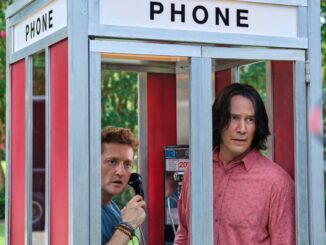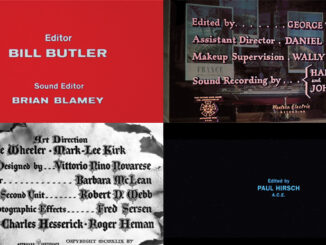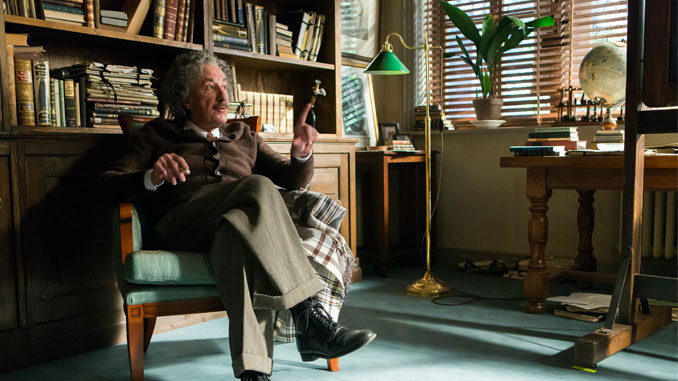
by Michael Goldman • photos courtesy of National Geographic Channel
There probably isn’t a more iconic 20th century figure than Albert Einstein, given that his scientific work literally changed the course of world history and how humans view the universe. At the same time, until now, there may never have been a major historical figure’s life story harder to neatly package up and dramatize in a narrative format than Einstein’s. He’s been the subject of numerous books and documentaries, of course, but it took literally decades of studying his private correspondence before it finally became clear that his personal human story was even more dramatically compelling than his scientific story.
That personal story was comprehensively told in the 2007 book Einstein: His Life and Universe by Walter Isaacson, and a couple others. But still, the puzzle of how to encapsulate such a titanic existence — balancing the personal and the scientific in a way that would allow the layperson to understand the science without losing focus on the human drama — confounded many contemplating the thought of bringing an accurate depiction of Einstein to screens large or small.
The National Geographic Channel, in search of its first scripted narrative project, finally took up the challenge by hiring feature film producers Brian Grazer and Ron Howard to produce a 10-episode series based on Isaacson’s book. Entitled Genius, the series stars Geoffrey Rush as the elder Einstein and Johnny Flynn as his youthful incarnation and premiered April 25, with the Oscar-winning Howard directing the pilot. National Geographic has announced that the series has been picked up for a second season.
Helming the show’s creative path, the director initially planned to partner with his longtime co-editor, Dan Hanley, ACE, to cut the massive project, which was shot entirely on location in Prague. The idea was to tell the story in a way that could organically weave the parallel stories of Einstein’s rebellious beginnings as a young man on the cusp of discovering both his genius and his intense romantic passions, with the elder Einstein, now a celebrity, suddenly thrust into European politics as the ugly specter of Nazism began to rise, forcing him to flee to America at long last.
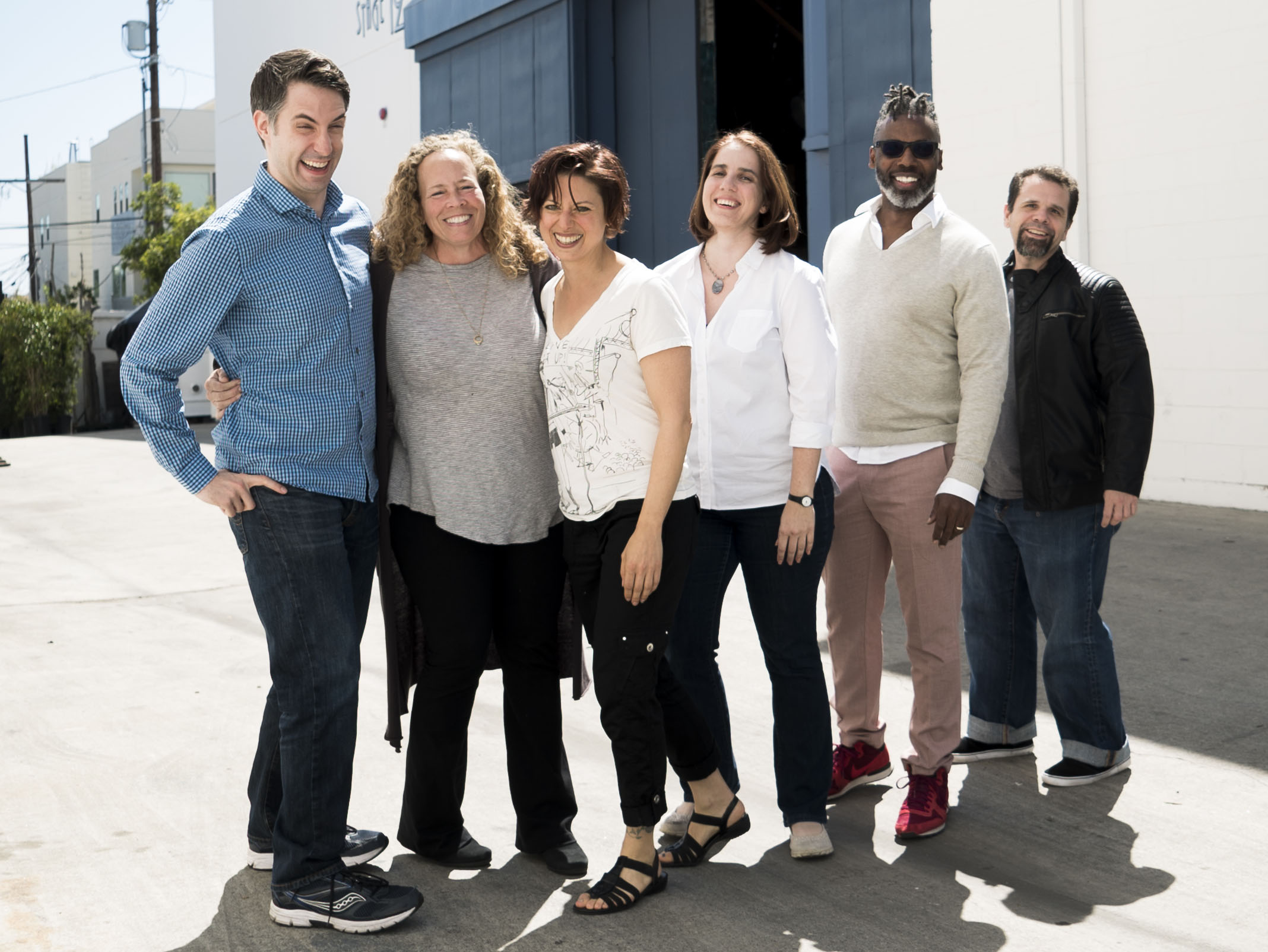
Editor James Wilcox was picked to partner with Hanley on the project, but early in development, he discovered that Hanley had suddenly decided to retire. “Ron had always traditionally worked with Dan and [the now retired] Mike Hill,” Wilcox explains. “Dan was coming off Ron’s 2016 movie, Inferno, and we were getting ready to start, heading into Labor Day. But Dan expressed to Ron that it was time for him to retire. So, the next thing you know, I had inherited the project.”
What Wilcox initially inherited was the chance to collaborate on a pilot for which Howard was shooting feature-film-level amounts of footage, and which quickly got a direct-to-series order, meaning production was going to continue unabated through 10 episodes. Thus, editor J. Kathleen Gibson, ACE, was added to the team, and then Debby Germino followed shortly thereafter. Gibson and Germino both started immediately helping Wilcox cut particular scenes for the pilot, and then Gibson moved on to cut episode two, while Wilcox finalized the pilot. He then went on to cut episode three, and Germino episodes four and five. Gibson then cut episodes six and seven, Wilcox episodes eight and nine, and Germino episode 10.
“They allowed the pilot to go long, and probably, the season finale and the next-to-last show, will get some variance in time, while the others will run about 50 minutes,” Wilcox elaborates. “So we are talking about more than 10 hours of television filmmaking, editing and storytelling. No one person could handle that on this kind of schedule. It is like 10 works of art, 10 movies really. So a three-editor rotation, with three editors and three assistants, worked best. That is kind of standard at this point for the density of the material and the schedules. So, even now [at press time], we’re still challenged to meet deadlines.”
With production on location in Prague and such a huge volume of footage, along with the need to work around schedule limitations of actors — particularly Rush — and the need to build in key visual effects sequences, there were many technical and logistical challenges involved (see sidebar, below). But from an editing point of view, the biggest challenge was always creative: What form of storytelling to utilize?
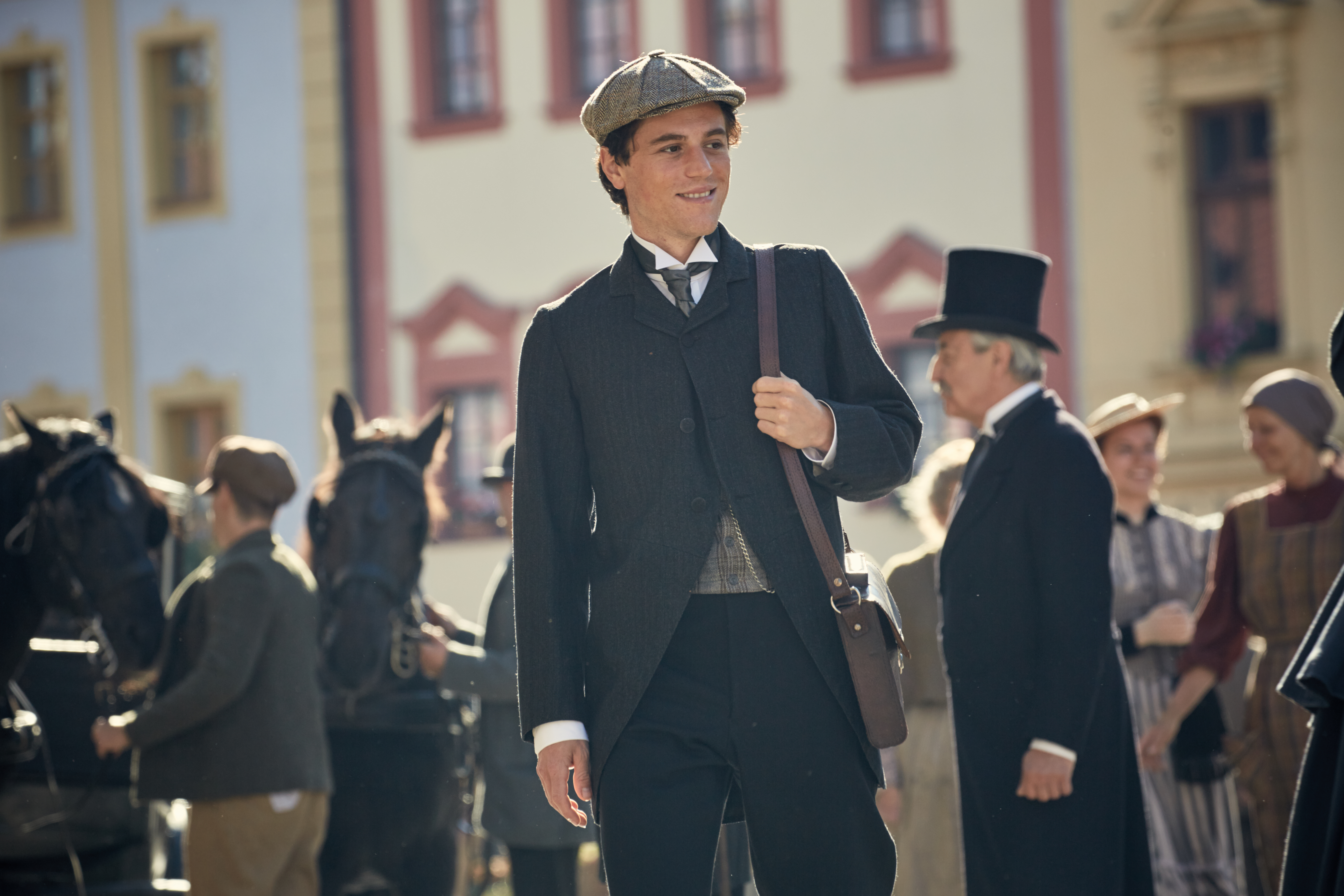
“How were we going to avoid a dusty portrayal of Einstein?” Wilcox continues. In his view, the answer came by riding what he calls a growing trend for deep period work these days — “the modernization of storytelling with traditional or historical subjects.”
By that, the editor means using state-of-the-art techniques and camera work, but married to historical images. “We wanted to be in the point of view of the character,” he says. “And when Ron shoots, he shoots in great detail. If you look at the pilot, where people pick up things, you know what the object is — a piece of chalk on a chalkboard — and he brings us so close to the chalkboard that you almost feel like you are the one writing on it. So we had lots of tight close-ups, all those things that really convey emotion and detail.”
Indeed, Germino adds, one of the goals was to emphasize or highlight “the stunning locations of Prague” and the stylized cinematography used throughout the series, in which lens flares, natural light, color desaturation, wide vistas and so on are utilized to move the story back and forth narratively between flashbacks to the younger Einstein’s life from the later, Nazi-menaced life of the older Einstein.
“The cinematography was beautiful work,” says Germino. “One of the definite goals of the storytelling was to do a lot of extreme close-ups and extreme wide angles. There was definitely an effort to use those types of shots, and to really be able to highlight some of those beautiful locations. As long as we didn’t sacrifice story, we would do it; most frequently, it was useful for advancing story. But there were some beautiful shots we had to take out, because in television, you have to stay within 50 minutes.”
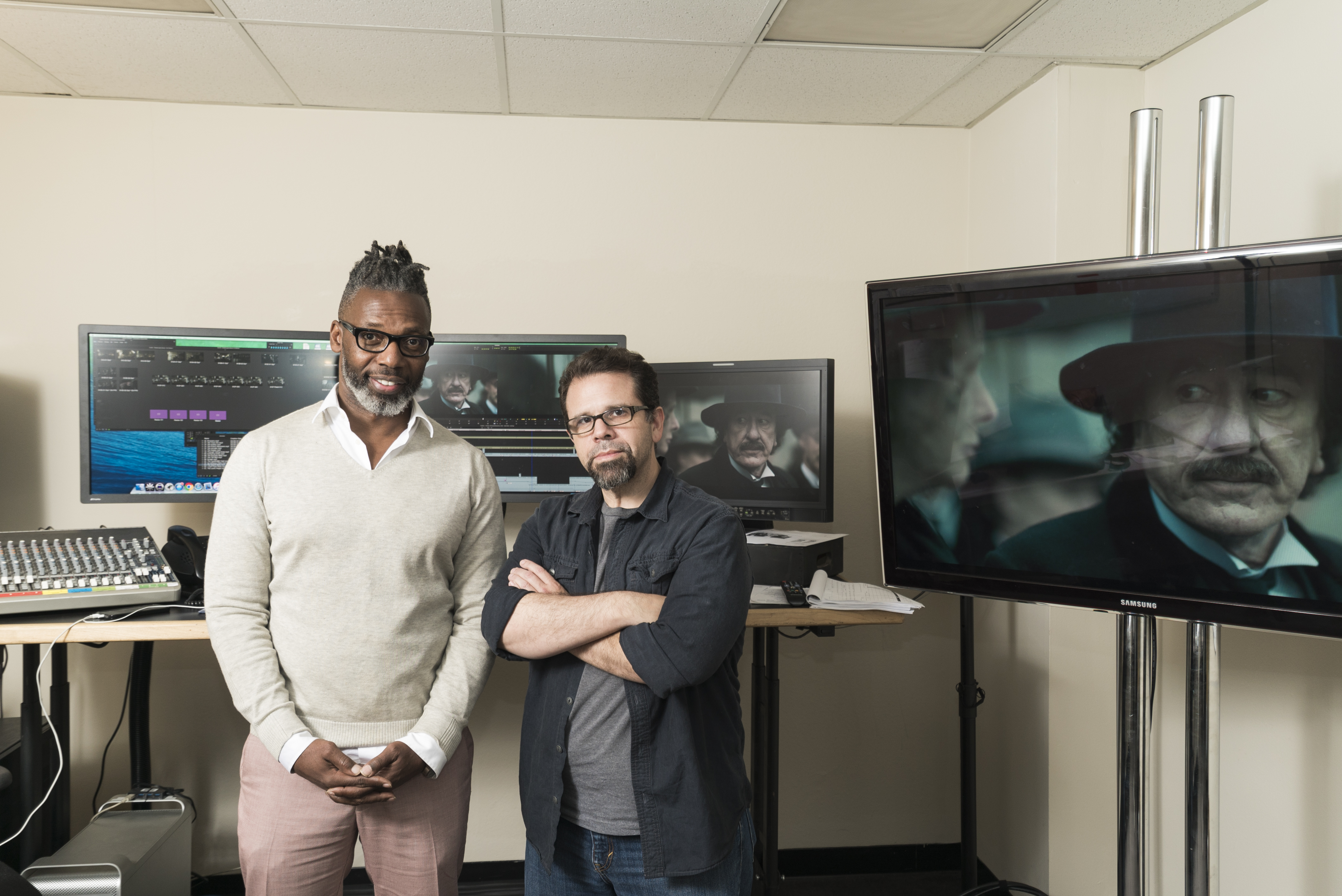
In any case, all along the way, the goal was to keep the focus on Einstein’s personal story. His first love, his first and second marriages, his affairs, friendships and moral dilemmas in the face of great hostility in both the scientific and political communities, all intersected with major scientific achievements in his career. Wilcox calls this a portrayal of “a complex and somewhat difficult person.”
This was yet another reason why the story is told in nonlinear fashion. The pilot introduces both stories and moves between them using a variety of cutting techniques to wind them together seamlessly. Then, episodes two through five focus on young Einstein, before both versions appear again in episode six, and then the older Einstein’s story fully takes over in episodes seven (with a brief cameo from young Einstein) and eight through ten.
There were some logistical reasons for some of this, in the sense that Rush was not immediately available to filmmakers, so they started filming sequences with Flynn as young Einstein, and then, “once he set the mold for young Albert nicely in terms of the mannerisms and eccentricities he carried into his life, that helped influence things the rest of the way,” Wilcox adds. “So when Geoffrey came on board, he looked at what Johnny had done, and they kind of made it one.”
The bigger influence on the nonlinear structure, however, was the simple fact that it fit with a story about Albert Einstein. Given that the great scientist’s theories and breakthroughs involved the nature of time and how it is not as rigid or inflexible as had always been presumed, moving around through Einstein’s life fit the way that he thought about and approached life, according to the editors.
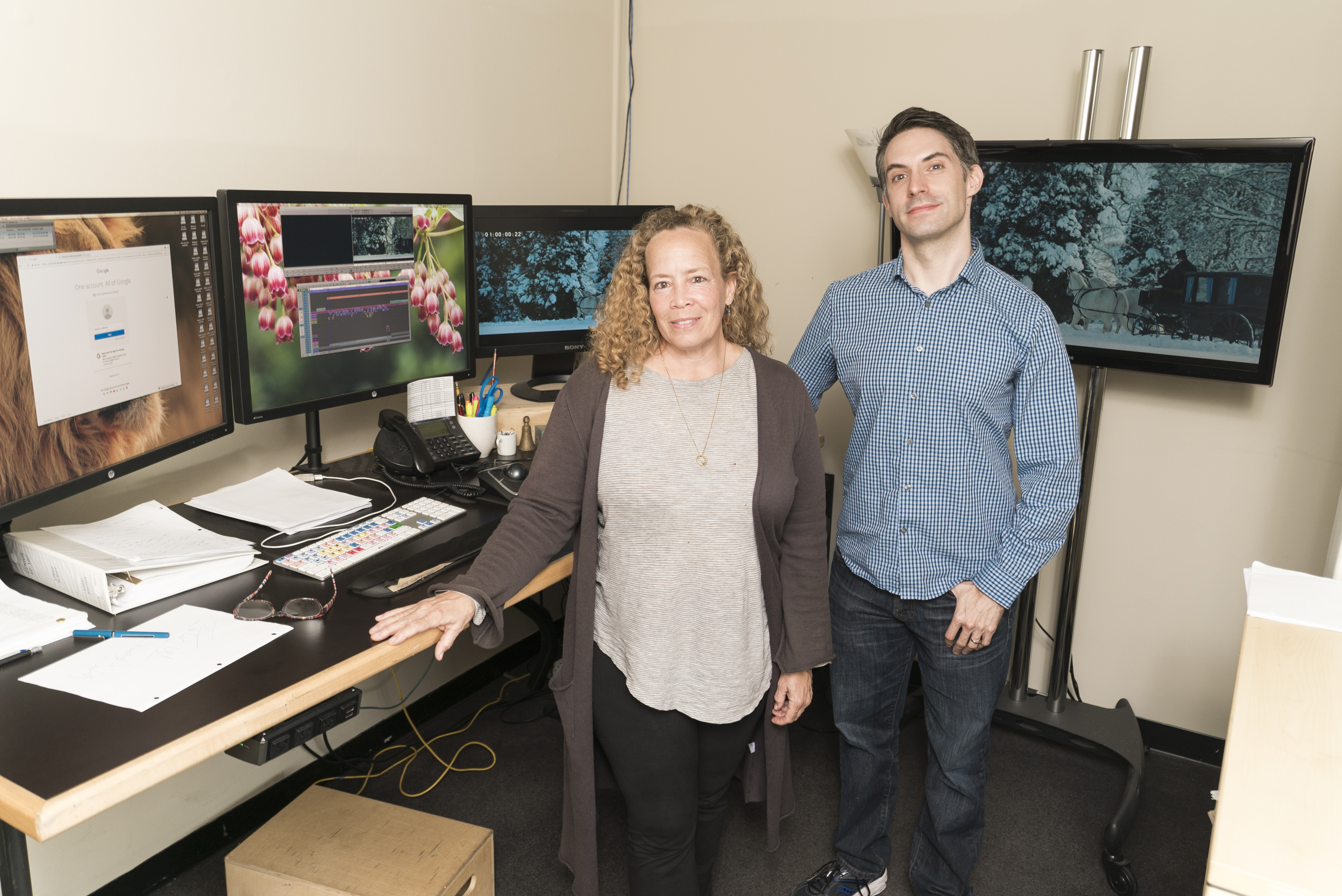
“Obviously, we had a lifetime condensed into 10 episodes,” offers Gibson. “The scripts tried to stay true to his life narrative as much as possible, but making it fit within 10 hours. From a physics approach, time is fluid, of course. So we move back and forth and around in time, not always in a linear way. But we tell it in a way that people can follow. Sometimes, we have chyrons giving a date or a place. But we also have certain looks for certain periods. What would be present day in the show has a more realistic look; the colors are not saturated in terms of being dense, but just sort of real. If we go to a flashback in an earlier time period, it’s desaturated, with red coming through a little bit more. But everything else is kind of combination of a sepia, gray, black and white look — a visual cue that we are shifting in time.”
Gibson adds that this nonlinear structure, combined with the wealth of material with which the editors had to work, permitted the editors to experiment liberally en route to fulfilling their obligation of making sure the story flowed correctly.
“Frequently in editing, you shift things around — even intercut things that were not initially meant to be intercut — to make the story flow better and tell it in a way that works better,” she says. “We were going to shift in time anyway, being that this is a story about Einstein, but we were not married to any one rigid way of telling the story. If I had to shift things around to make a scene or an episode work better, then that is what I did.”
Another big challenge for editors involved correctly utilizing a methodology for illustrating what was going on in Einstein’s head when he went into a state of visualizing a major new scientific idea, and how to do it in a way that would not lose the viewer in the scientific details, take them out of the narrative, or be over-the-top. The solution the filmmakers innovated came to be referred to as Einstein’s “thought experiments.”
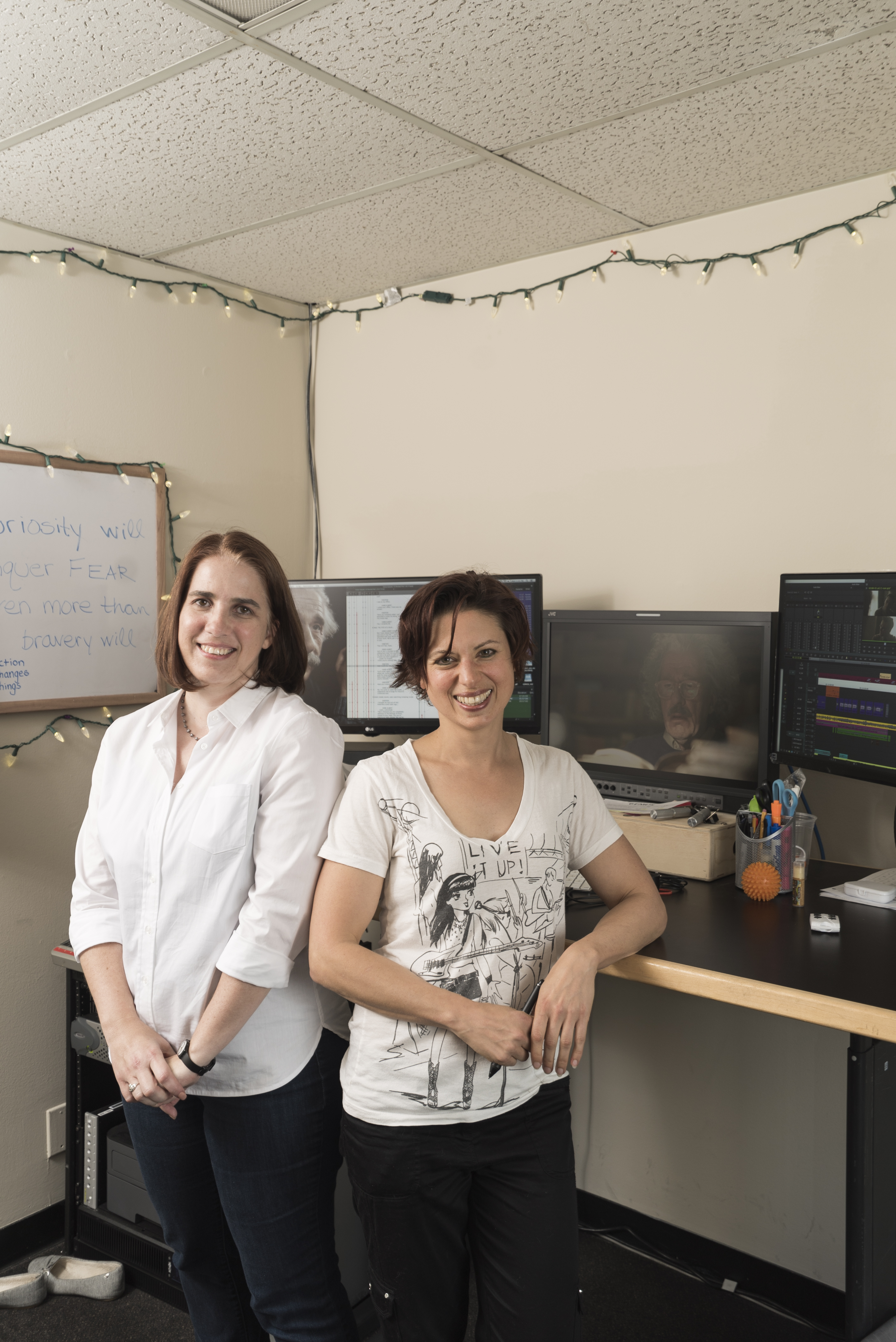
These, essentially, are modest CG representations of the way Einstein might explain such concepts to non-experts back in his era. As such, the editorial team mocked up crude versions of the various effects for the thought experiments to start the cut and figure out timing and pacing, while waiting for the final visual effects to drop into the final cut. With no visual effects editor on the show, the technical aspects of this chore fell to the assistant editors (see sidebar, below), but nuancing them just right was among the most complicated parts of editing Genius.
“It was really fun grappling with that aspect,” says Germino. “We had to keep it scientifically accurate for the time period, and yet we couldn’t take viewers out of the story and go over their heads. So we had to find a way to do a simplification of it for a general audience that was interesting. We worked with our VFX supervisor and science consultants on set on the thought experiments; every episode has one. We basically go into Einstein’s head and try to see what he was seeing when he was visualizing one of his theories.”
Episode two features a typical thought experiment as young Einstein is daydreaming in class, tuning out his professor and visualizing pieces of his Theory of Relativity. We see the ceiling give way and simply travel into space. On another occasion, we see light beams emanate from his mind to outer space to the sun as he gives a university lecture. None of the CG is particularly ornate or elaborate; indeed, it was all designed to fit what was known to have been conceptually comprehensible to Einstein at that time in history.
In keeping with the theme of the material, editors also played with the movement of people and elements in frames to represent time speeding or slowing for Einstein as he either entered into deep thought or, at times, deep anxiety. At one point, while taking entrance exams to get into university, young Einstein is overcome by anxiety when he realizes he has not bothered to study anything but mathematics and physics. For him, time slows, while for everyone else in the scene, time speeds up.
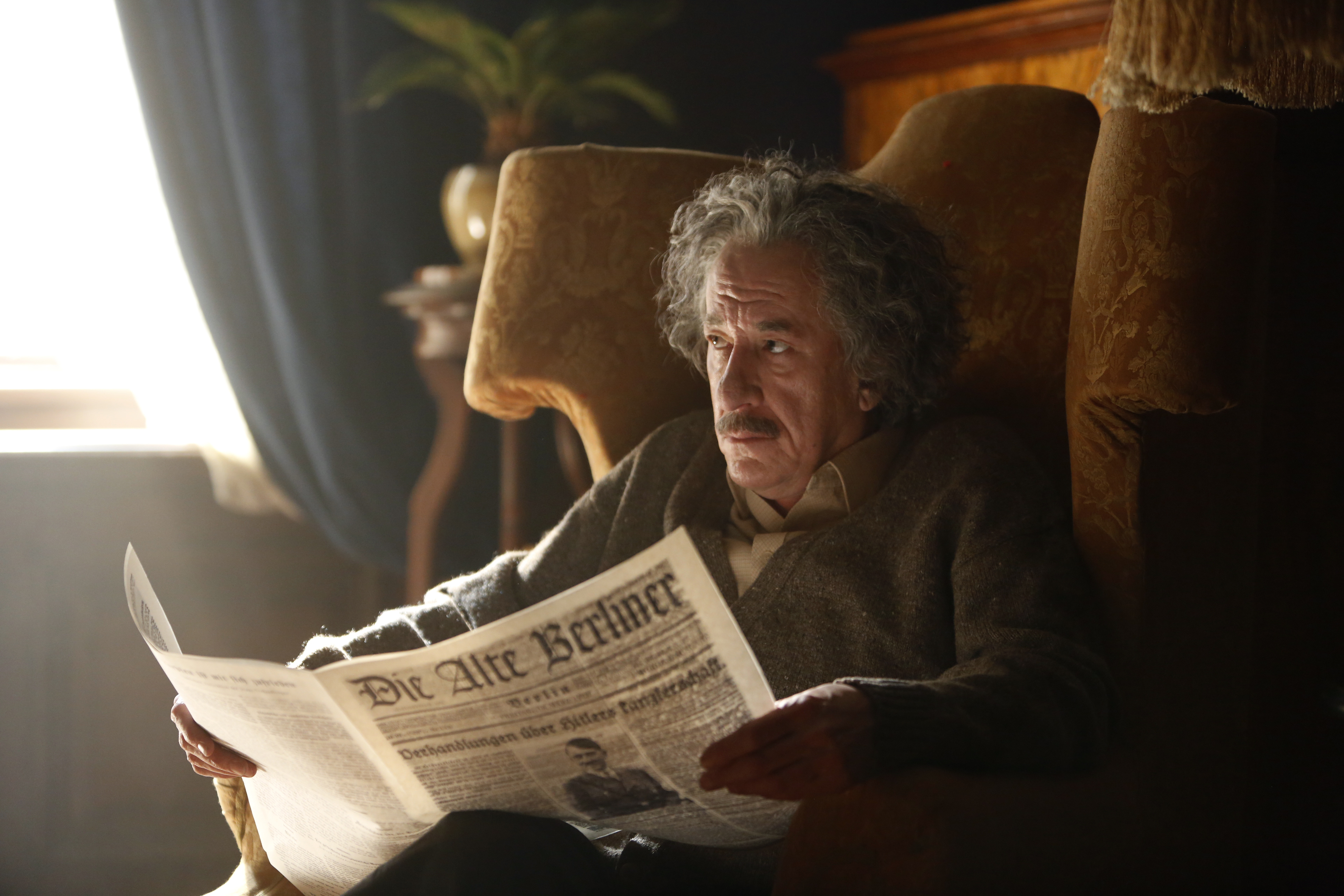
“We kind of embraced that idea of going back and forth in time as something that was part of Einstein in a sense,” says Germino. “We would ramp time up or slow it down to get you into his head a little bit and mimic the idea of a flow state — in which he gets an idea and ramps up and goes really fast. Or something forms in his head, and everything slows down into slow motion, kind of where time even stands still at one point. We embraced that idea and used it to our advantage.
“We used other techniques for going back years in his life also,” she continues. “They would write it really beautifully where one thought would jump into the next thought, so we would use a lot of pre-lapping to connect different time periods, meaning dialogue from the next scene underneath the end of the preceding scene to create connecting tissue between the different periods.”
Gibson adds that, in keeping with the free-flowing, free-thinking, rebellious nature of Einstein, the editors on Genius felt liberated to ignore “typical rules of cinema” in terms of their cutting techniques when it came to bringing these elements together seamlessly.
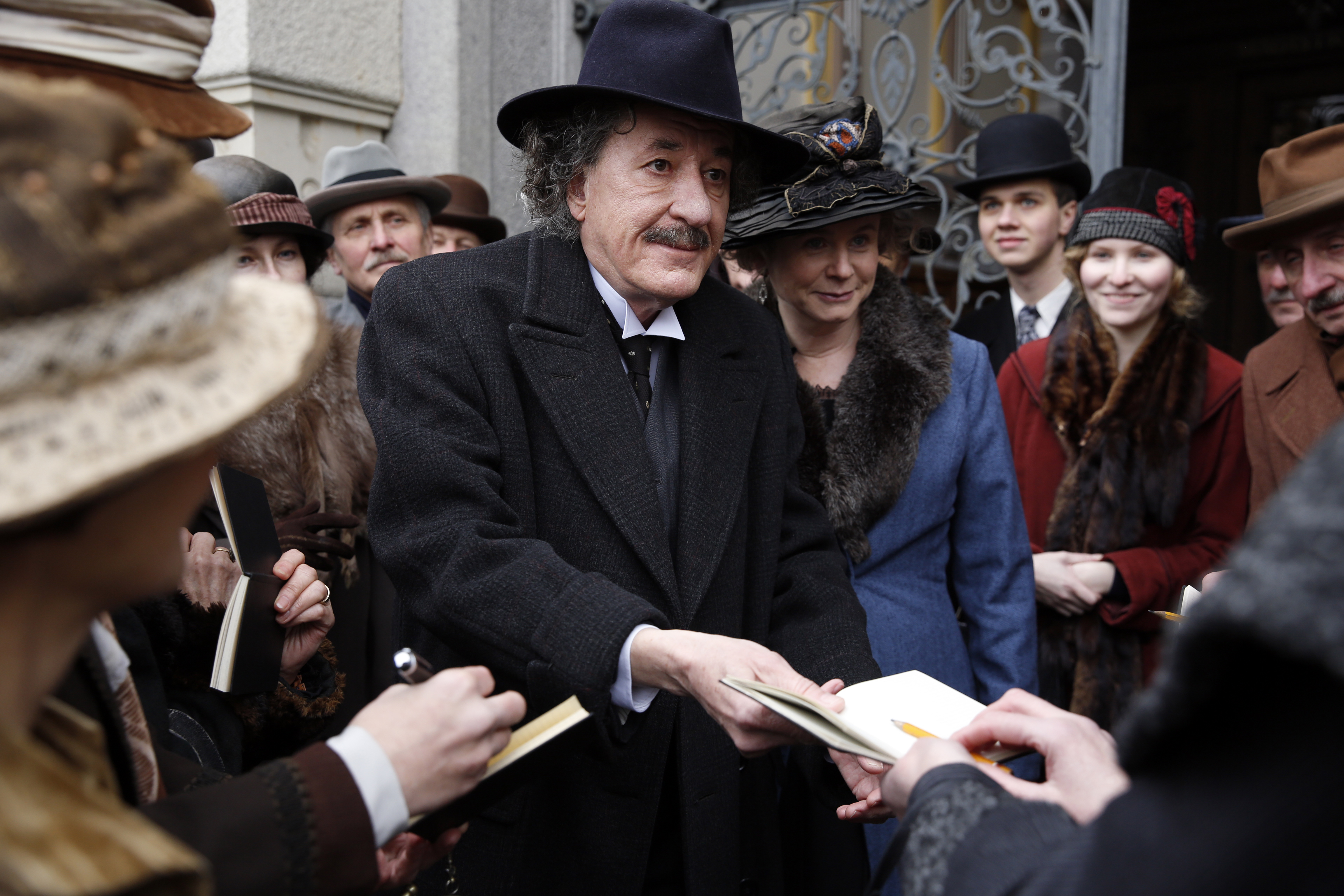
“There were times when we were on a macro shot, and then we jumped wide,” she said. “According to a theory book, that would not be appropriate, but it felt right for this. We have some shots that are huge vistas across snowy landscapes. They are absolutely stunning, great production value, and it looks very rich and suits the story. Sometimes there would be a camera move that would have to be cut short, or a shot that did not quite look the way we wanted it, even though it was beautiful, so we would make a compromise and do it another way. The beauty of this show is that we had so many choices. But as an editor, you have to pick one; you can’t use them all.”
These issues are what Wilcox was talking about when he referenced “the modernization of storytelling.” To keep up with with strong scripts, Howard’s creative leadership and contributions from directors of other episodes, Wilcox suggests the editors were ultra-concerned about making Genius a “textural” piece in order to tell us what Einstein was going through.
“When Albert plays the violin, we were tight on his face, and we could see Geoffrey’s fingers up close, the bowing of the violin, all that kind of stuff,” he explains. “These were all the real things about Einstein. He was a genius, after all, and to me, that was the real story: how did he overcome those obstacles, including ones of his own doing, and continue to pursue the things that were important to him in life? That’s how he became a genius in the end, and that’s the story we are telling.”
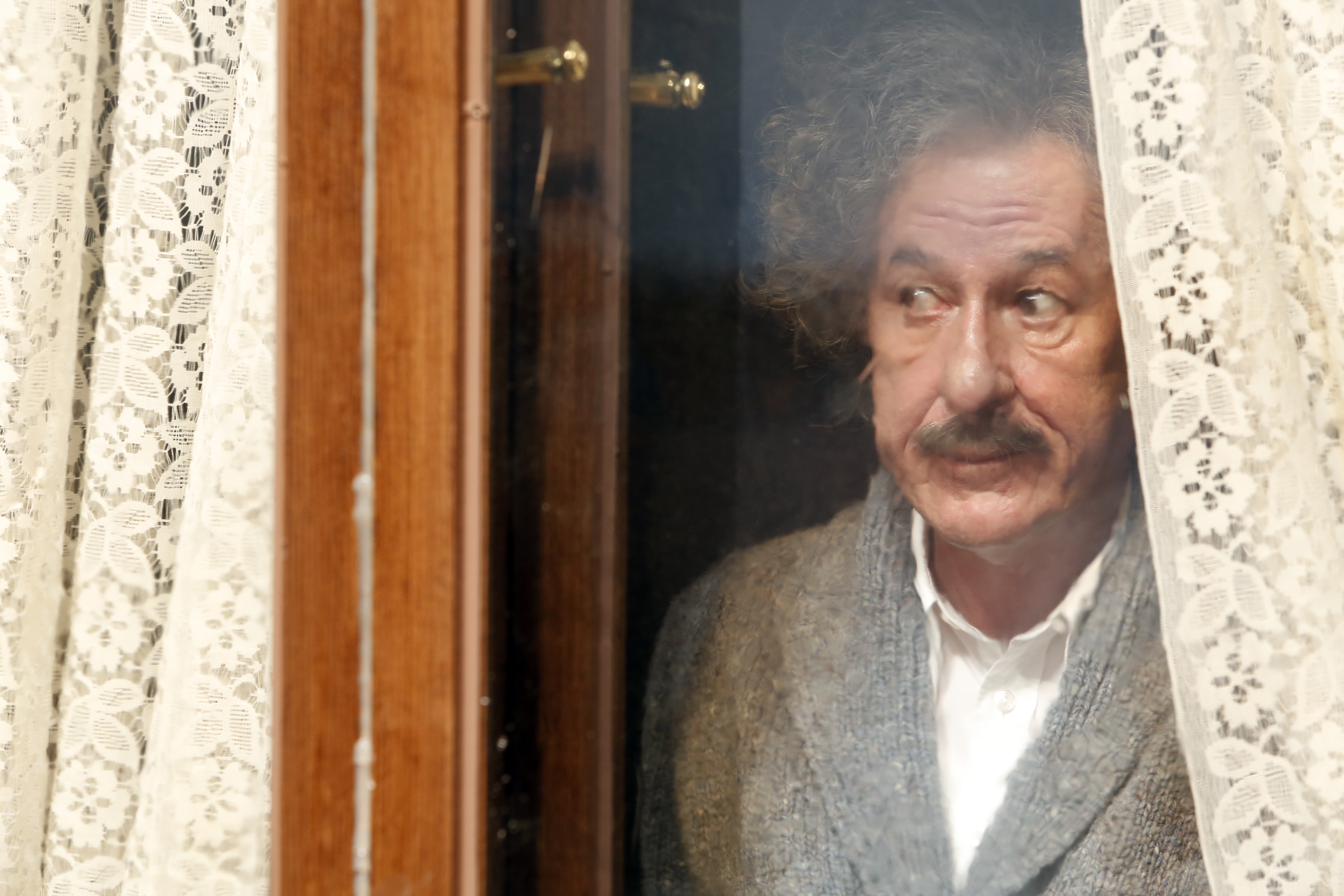
A ‘Genius’ Workflow
Genius was shot on location in Prague using a combination of three Arri Alexa camera systems: the Alexa XT, Alexa Plus and Alexa Mini, with some GoPro and Canon 7Ds work thrown in. Therefore, the post vendor was kept busy during production, transferring dailies and transcoding them to the Avid DnX36 codec. Each evening, those transcoded dailies were prepped and uploaded using Aspera Connect Server technology, so that the production’s trio of assistant editors — Agustín Rexach teamed with Wilcox, Derek Stricker with Kathleen Gibson, and Beth Conley teamed with Germino — could begin working on them each morning at the show’s production offices at Sunset Gower Studios.
Rexach says that each editorial team more or less operated in a self-contained manner, with the assistants copying dailies to their shared Avid NEXIS Storage system (22TB) each morning so that dailies prep could begin. Each editor and assistant worked on his or her own Avid Media Composer (8.5.2) workstation throughout production.
“Each editor liked to organize his or her material differently,” Rexach says. “In James’ case, he hates clutter and liked his bins to reflect that. Production would shoot between two and four cameras with each setup, and James initially would only want to see all his printed takes with all cameras grouped together in single grouped clips at the top of the bin. He starts there and takes great care to go through script notes, incorporating any notes the director made on set. I also prepare non-printed [B-Neg] takes, but I keep them hidden from view until James specifically asks for this material.”
Rexach also points out that since the production did not employ a separate visual effects editor, each assistant shouldered that responsibility on his or her respective episodes.
“Once we determined what shots needed visual effects, we would generate an EDL of the pertinent shots,” he explains. “Encore Hollywood, which handled our online and color correction, would pull the selected plates and upload them as ProRes 4444 files to United Production Partners VFX in Prague. Once they completed the effects shots, they would send us DnX36 versions that we could drop into the cuts. Feedback sessions would be conducted via conference call using cineSync [review and approval] software, enabling our cutting rooms to share the same video files with UPP in Prague.”
Rexach adds that he and Wilcox frequently did preliminary sound design work while cutting, because doing so made the cut “more cohesive and strong” and helped provide a template for sound designer Daniel Pagan and the sound team for when they later launched into the final sound design process.



